Grapevine Stories
A trip to Romania with Hope and Homes for Children
I travelled to Romania a few weeks ago to see the amazing work Hope and Homes for Children are doing and also see the harsh reality of what still needs to be done out there.
Having been made a trustee of my father's charitable trust, The Sumner Wilson Charitable Trust, I decided I needed to go and see and hear first-hand, all the incredible work Hope and Homes for Children (HHC) have been doing, so off I set to Romania.
The Sumner Wilson Charitable Trust has had a long-standing and close relationship with HHC. Their founders, Mark and Caroline Cook, knew my father Mike Wilson well and he supported HHC from the very early days.
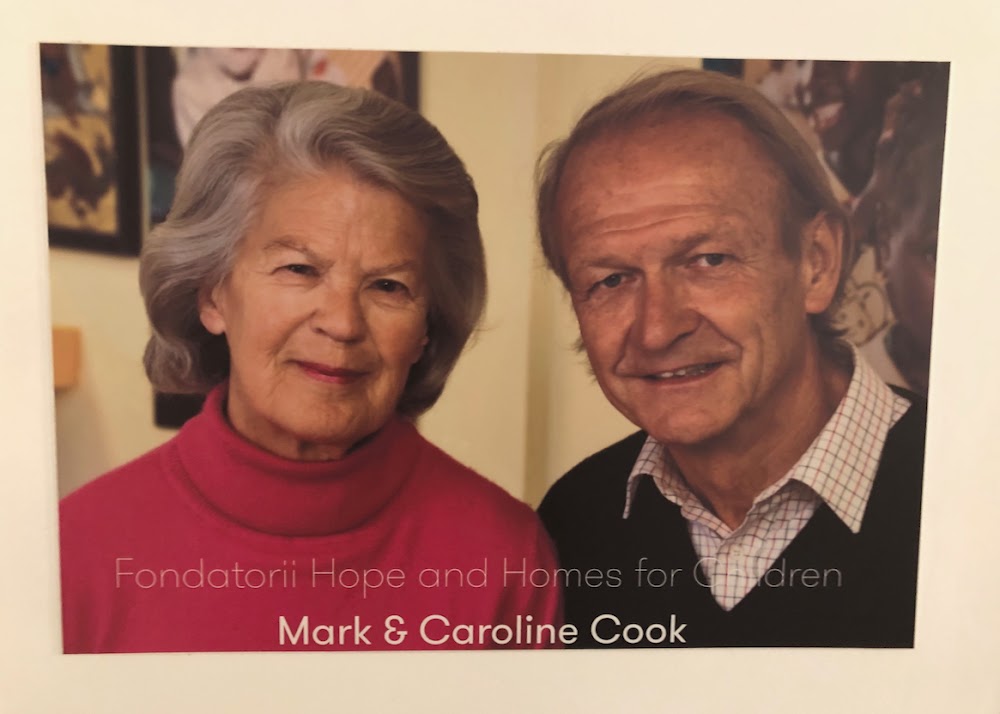
We were escorted by the wonderful Liz Deegan, who has a long standing involvement with HHC and has been on trips to the Ukraine and Rwanda with them, so she very much knew the drill and I was so lucky to have her with me. she was very supportive wonderful company.
Our days were so incredibly packed with visits to homes, centres and communities, along with meeting some of the incredible social workers, therapists and managers, it was hard to process everything at the end of each day.
We have left here feeling pretty shell-shocked and but also in awe of the incredible work the HHC team do. We had so much to digest, I don’t really know where to start, but I’ll try.
I had no idea how complex the issues are for HHC. I knew that their main objective was to close down all orphanages and institutions, not just in Romania, but in as many countries as possible. But I rather naively did not realise the complexity of the issue and how there are just so many elements and complicated layers to this. Sadly it’s just not as simple as closing them down.
What we do know is that institutions (orphanages) have got to be totally eradicated. No child should live in this loveless and incredibly damaging environment. It is HHC’s aim to have closed down all institutions in Romania by the end of 2027. I think such is their determination, they will achieve this, but they need all of our help.
The problem with Romania is the high number of the population who are on or below the poverty line. One million out of the population of 20 million people (5%) live on less than $2 a day. Then 5.1 million (25%) people live on no more than $5.5 per day.
The many Romanians who fall in this bracket get entangled in the terrible, vicious circle that is virtually impossible to get out of. It typically goes like this:
1.They are from families who have struggled to support themselves - they can’t afford housing with running water or electricity.
HHC have set up these drop-in centres where many people who fall into this bracket can come along and use the showers and washing machines, where they will be provided with washing powder, soap and shampoo, etc. So at least they can get clean and get fresh water to take back to their accommodation.
By having this facility, it is hoped it will give these people a leg-up to get on their feet and hopefully not have their children taken away from them due to neglect and lack of basic care.
2. They end up dirty and smelly and when they try and get a job, either they will not be employed as they have a lack of education, or they are from the Roma community where they are typically not accepted in societies and no one wants to employ them.
These vulnerable women have little or no education, so have not the first clue about contraception. They have babies on a regular basis. We met several mothers with 7 or 8 children, and one with 9 children, and they were all under the age of 30. They then can’t get jobs as they have their hands full with child care and so it goes on…
Children of these families are more often than not single mothers and are not accepted into schools by other children as they smell unpleasant.
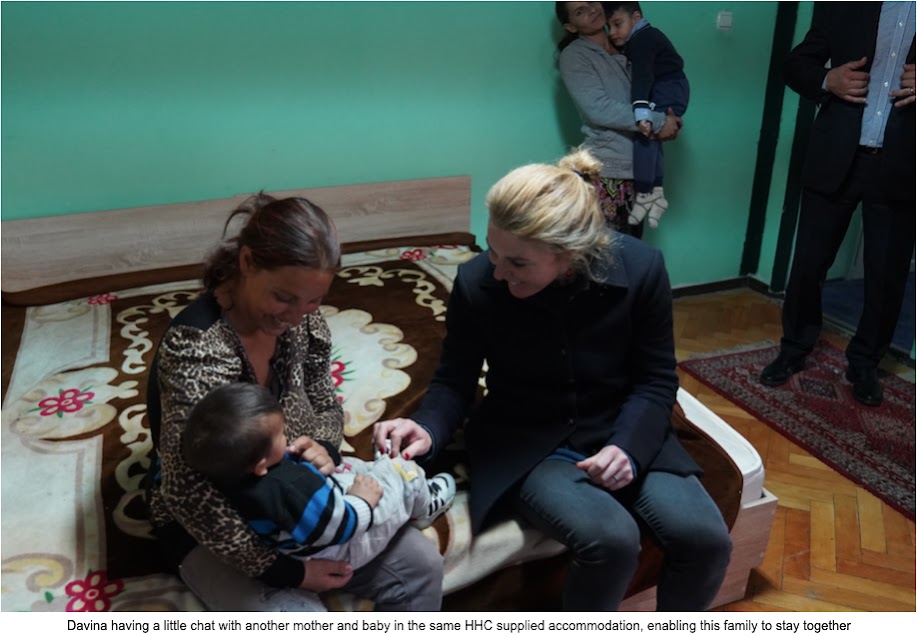
On our second day, we travelled with the British Ambassador of Romania, Andrew Noble. This was very interesting as he was incredibly knowledgable about the many poverty problems that Romanians suffer. He spoke fluent Romanian and was brilliant at talking to these families and their children - he kindly interpreted everything for us.
We met a family in a tower block where they lived in a very small room, their living space was their bedroom, sitting room and kitchen, with a small suggestion of a loo adjoining the room. All nine of them slept in there with one sofa and an armchair, the rest had to sleep on the floor.
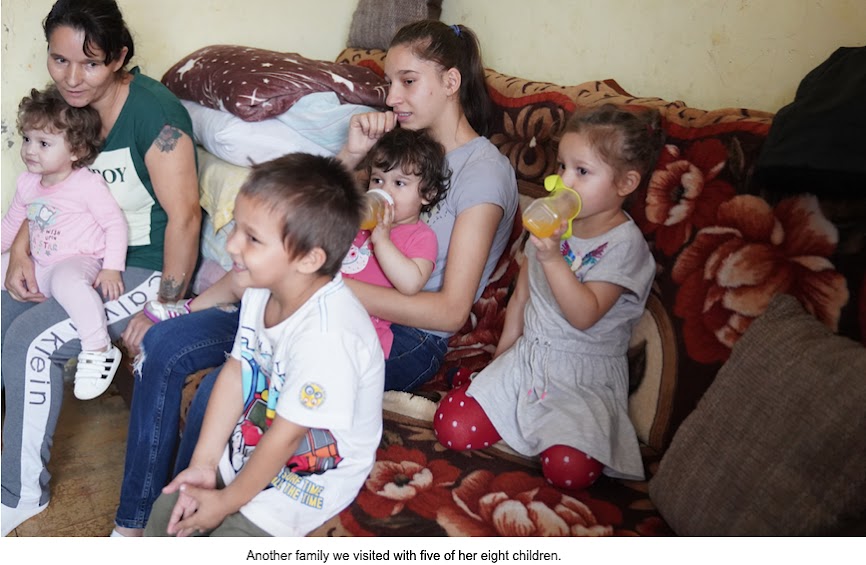
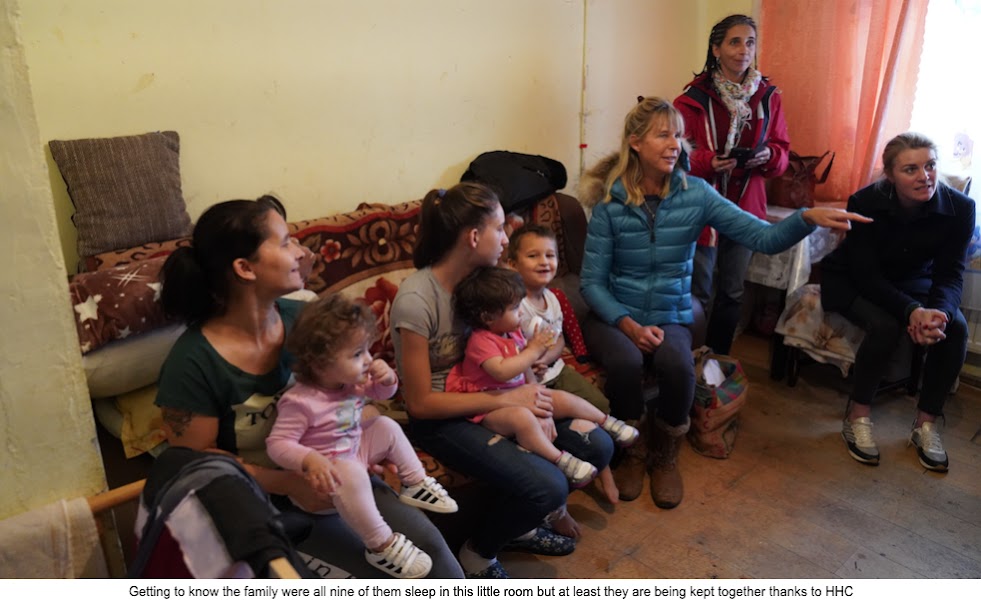
The oldest child was 16 years old but had dropped out of school as she was being bullied and was not accepted by the other children, as she wasn’t clean and smelt and was Roma. She looked so sad and clearly had been through a miserable time - it was heartbreaking to see her so pained. Seeing the pain in her face and how very tough life was for her, her mother and other siblings reduced me to tears after we left the tower block.
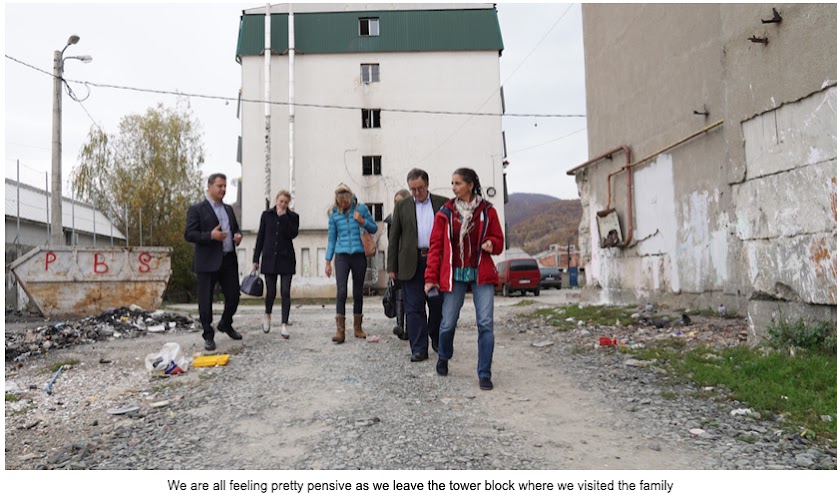
These women are the ones who’s children get taken away from them and in the past would be put into institutions but HHC have put these guidelines and services in place to make sure they are either somehow kept with their birth mothers so they can stay together, as actually the most important thing for children is to be loved and have a sense of belonging.
If children are abandoned because their parents are unable to support themselves, let alone another child, which too often is the case. HHC want to make sure they are re-homed to family homes or fostered so they have the care and love they would not get in an institution.
The trouble is often very hard to re-home children who have spent years in an institution with foster families, as these children through neglect, malnourishment and lack of education can be aggressive, have extensive behavioural and also developmental problems.
The most crucial development of a child’s brain is between the ages of 0 to 3 years old so if the brain is starved of love, physical contact and human interaction in those early years, the brain actually shrinks and this is hard to reverse.
HHC have several family homes where they can have up to 12 children living in a family environment, where they are made to feel as much like a family home as possible. With key figures in the house they build a relationship with, and have a safe environment, where they can exist and lead a life with the interaction, support and a sense of belonging.
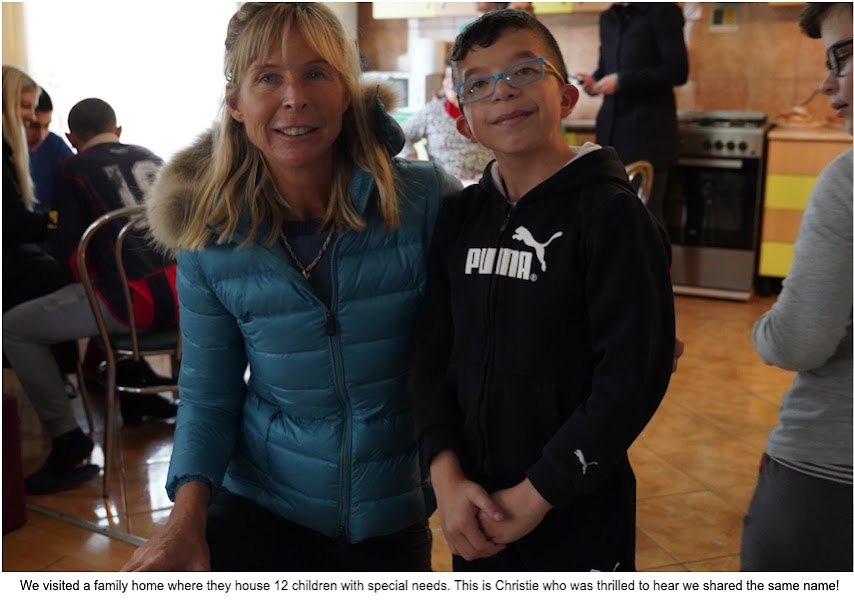
Meeting some of these families HHC are supporting and seeing these family homes they have created, showed us what an amazing job HHC are doing.It really does fill one with hope to see these children in a situation where they can develop emotionally, socially and physically within a safe and supportive environment that an institute simply is not.
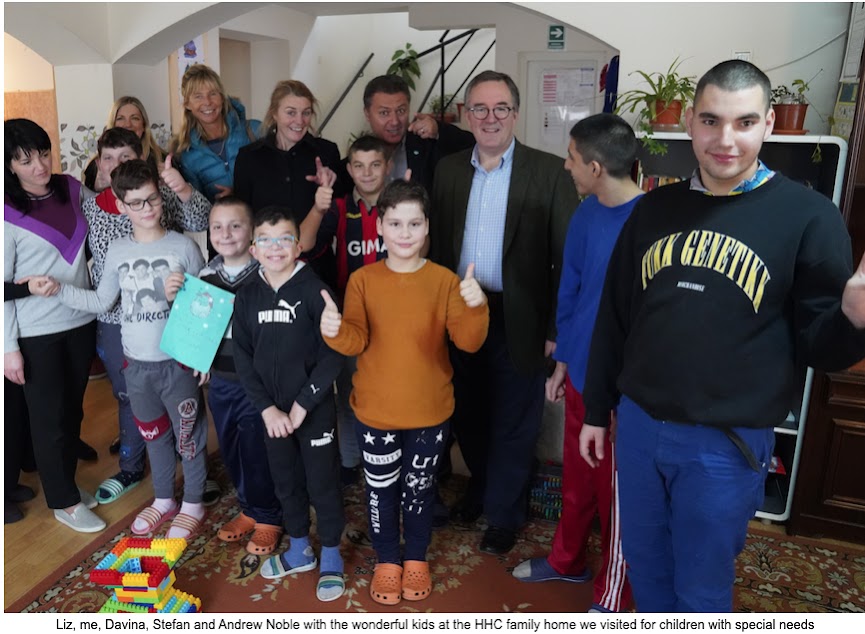
There were always going to be the parts of the trip where one feels full of hope one minute, then full of despair the next. HHC have done and are doing the most incredible job of eradicating institutional care but there is still a very long way to go.
On our final full day, we were taken to a Roma community called Pirita on the outskirts of Baia Mare where 3,500 people are living. They are living in structures made from junk and rubbish, they trawl their way through all the rubbish in the tips and try and find items they can sell.
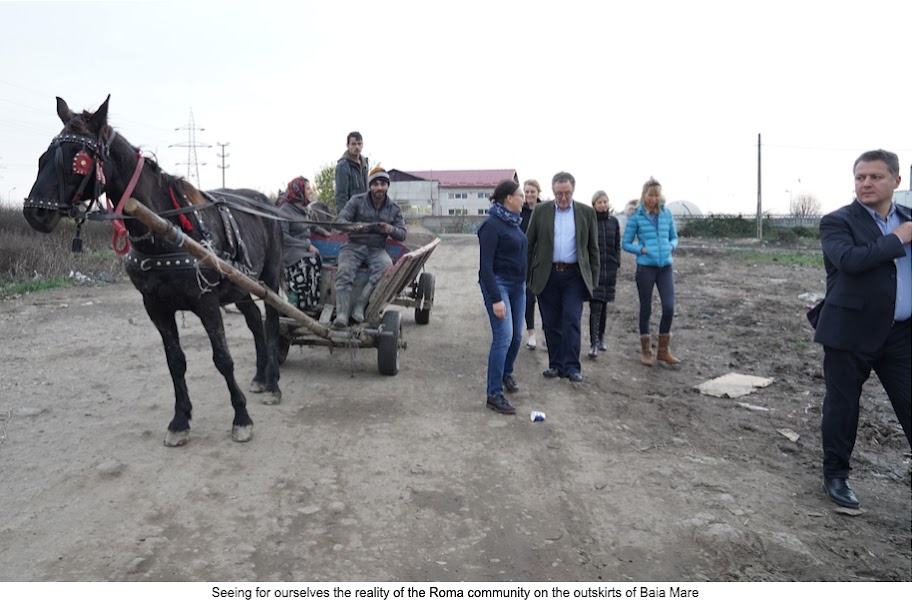
HHC has gone in there and created portacabins for the children to have one meal provided per day and somewhere dry to do their homework.The big problem is, these people do not actually have identities so therefore are not registered as being a person. They have no access to any services, or anything that can help them during their life.
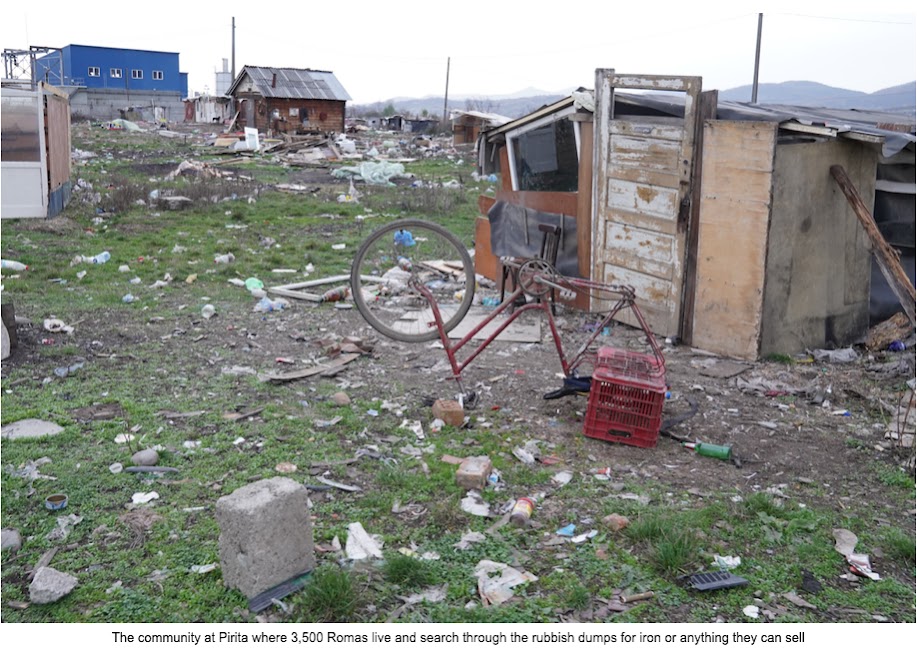
A few make the very brave move to try and leave this Roma community, but it takes a lot of courage as they risk being ostracised from their families and the people they know and they have never experienced life outside this existence.
We met one girl who, with the help of HHC, moved away from Pirita, as she wanted to try and get a better life for herself and her children. She had a son who with a severe disability and now lives in a room in a house with very little, but she has a roof over her head and can stay dry. See below.
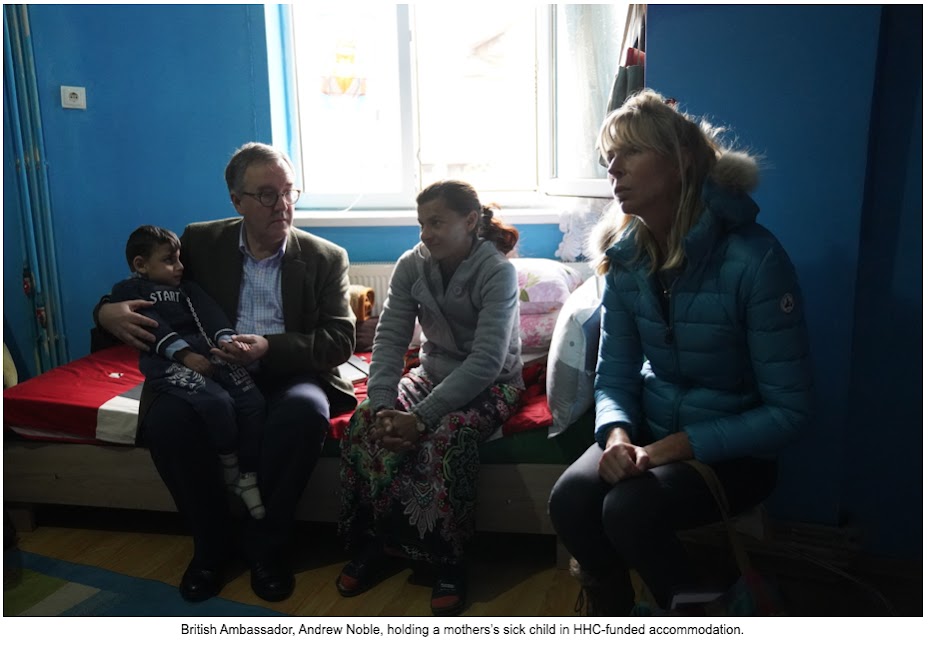
What I cannot comprehend is that the mothers of these children living in this community cannot go to sleep at night as the problem of rats is so bad they have to stay awake and keep watch, keeping the rats from getting at their children.
On our last day before heading to the airport, Bianca, our brilliant guide who accompanied us from HHC, as painful as it was going to be, wanted us to see an old style institution that HHC are trying to get closed down.
This institution is for children from 0-26 who were severely disabled. Nothing was going to prepare us for what we saw. These poor children had been either abandoned at birth or in the very early years of their life.
When we entered the first area where the teenagers were, they had nothing in the room with them at all, just corner seating in a bare room, the walls empty, literally nothing at all that relates to normal life, no activities, no TV, nothing. We then were taken into the room next door, we were shocked at what we found. The room had cot-like beds in it, the smell was really disturbing and what we saw was worse than we could ever have imagined.
These beds were occupied by girls in their late teens, up to their late 20s. They were so severely disabled, they either had not grown, could not speak or sit up - nothing. They have no type of human contact apart from the bare minimum, they were fed in bottles and changed on an irregular basis, no therapy, no stimulation. They are just left lying in their beds looking at the ceiling in silence. It really was totally appalling.
We then were taken to another area where there was a room full of cots with seriously ill and disabled younger children and babies. They had all been abandoned at birth because of their deformities, they too just lay there on their backs unable to communicate - no effort at all is made to try and stimulate then or communicate with them. It really was a very sorry and shocking sight.
There was one little boy of 16 months who had been abandoned at birth by his mother as he had a such deformed nose she couldn’t bare to look at him. He has also got multiple problems with his heart and brain and cannot be operated on as he needs to be a minimum of 10 kilos before they can do it.
Having seen all this, it has really made us feel very strongly about how important it is we carry on supporting HHC as much as we can. Meeting some of the families HHC are supporting and seeing the small family homes HHC have created, showed us what an amazing job they are doing.
It really does fill one with hope to see these children in a situation where they can develop emotionally, socially and physically within a safe and supportive environment. What we do know is we have to help eradicate these institutions (orphanages).
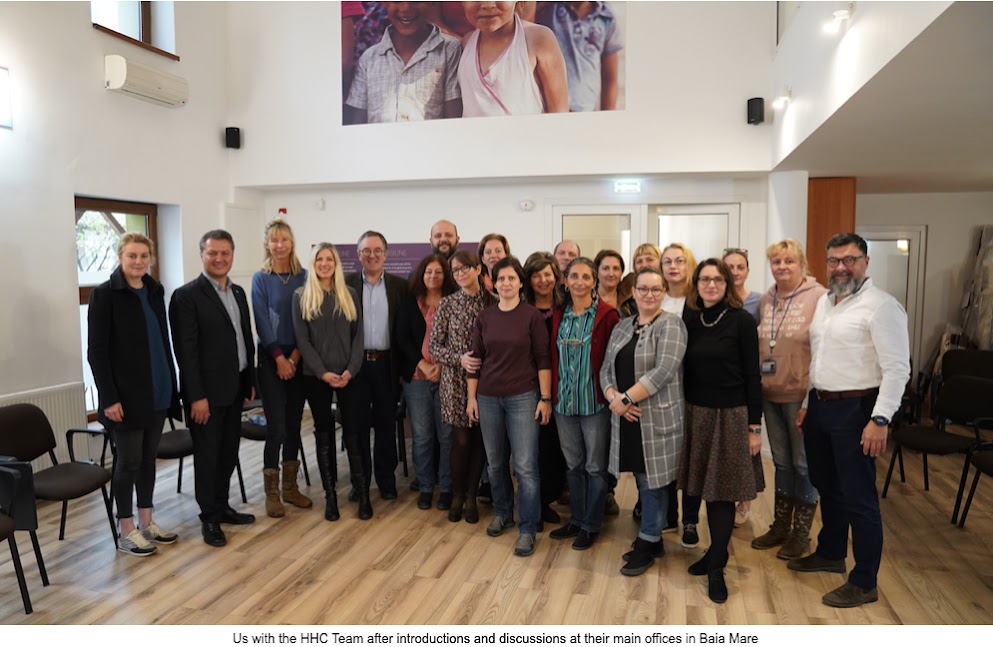
We were incredibly grateful to Liz Deegan from HHC for accompanying us and to Andrew Noble, the British Ambassador to Romania, for helping us understand so much about the country and its history. And of course, all those who work at HHC especially Bianca Stegeran and Stefan Darabus for showing us the reality of the problems Romania faces.
We are thinking of doing some sort of fundraising event in 2020 or 2021 so if you think you may have something to offer to enable us to do this, we would love to hear from you.
If you feel you could help and support Hope & Home for Children by making a donation, I know they would hugely appreciate it. Please do what you can. Thank you.
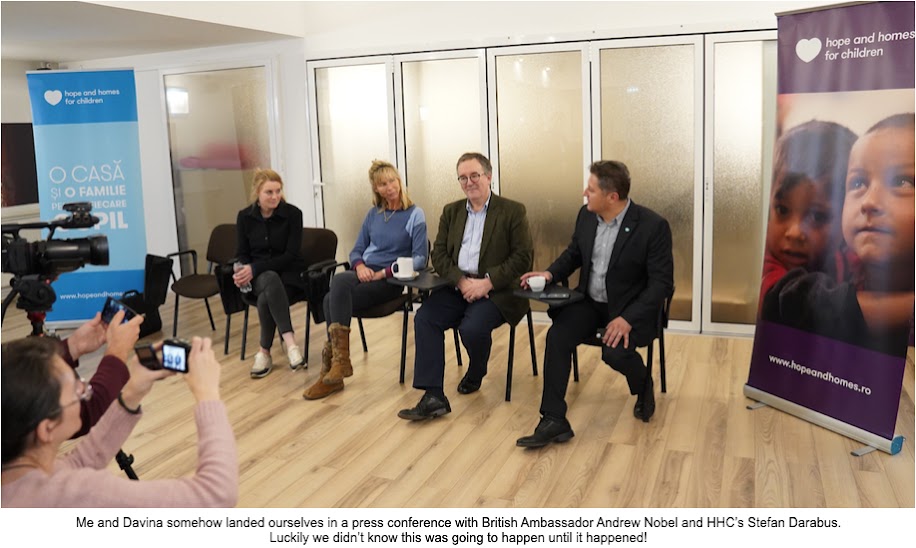
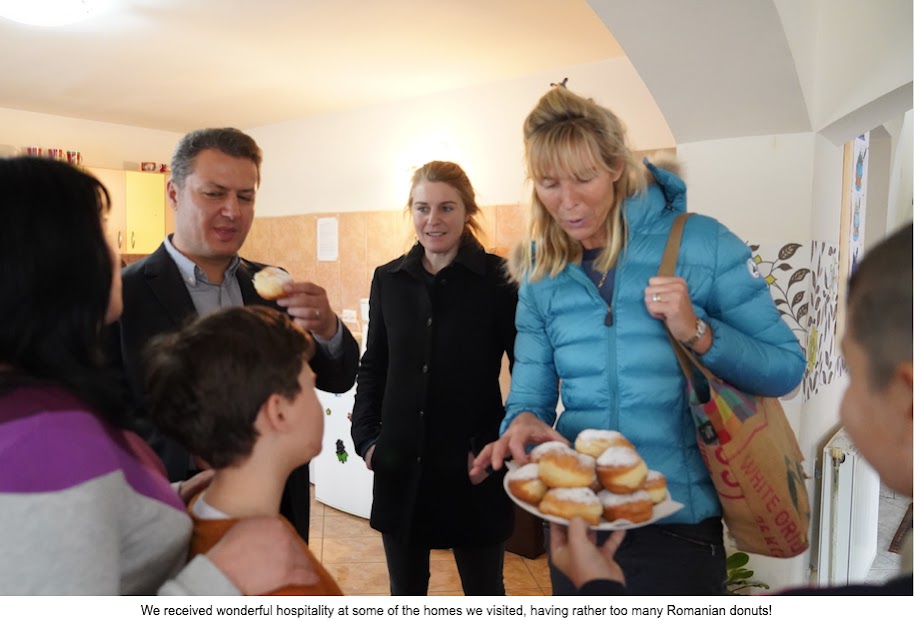
Grapevine is a trusted network of private members, linking kindred spirits from town or country. Members promote, sell or buy goods and services within the network.
Grapevine also believes in supporting young people to get a strong start through internships and work placements. We also help a number of charities including Heads Together and The Injured Jockeys Fund.